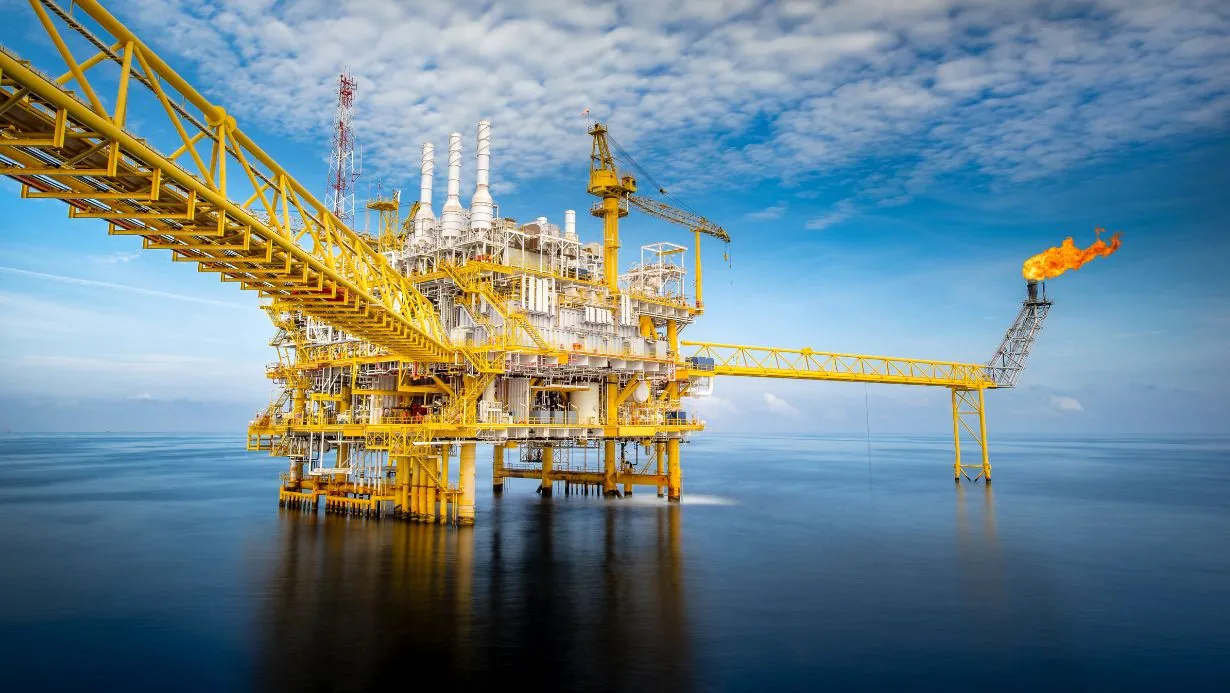It is expected that ONGC Oil and Natural Gas Corp. will begin producing oil from its much-delayed deep-sea water project in the Krishna Godavari basin in the Bay of Bengal this month, reversing years of decline in output. ONGC Director (Production) Pankaj Kumar said this month that Cluster-2 will start producing in KG-DWN-98/2 block this month and ramp up slowly.
A floating production unit, known as an FPSO, is already present in this block. Following several missed deadlines, ONGC has informed Shapoorji Pallonji Oil & Gas to prepare to receive the first oil this month on its floating production, storage and offloading vessel Armada Sterling-V. Cluster-2 was supposed to start producing oil by November 2021.
Kumar said ONGC plans to start producing from 3 to 4 wells initially and connect others gradually. An initial production rate of 8,000 to 9,000 barrels per day is possible.
In the beginning, ONGC will produce from three to four wells, gradually connecting others. “The initial production could be 8,000 to 9,000 barrels per day,” Kumar said.
ONGC is careful not to repeat the mistakes of the neighbouring KG-D6 block in the KG deep sea water project. Although gas production in the area is not as complex, opening oil valves too quickly may allow sand and water into wells. An official explained that drilling more wells and producing at optimal quantities is the key, not rushing in to produce larger volumes right away.
Mangalore Refinery and Petrochemicals Ltd will receive the first shipment of crude oil from ONGC, Kumar said.
He said crude will be tested, and yields will determine its grade and price.
ONGC has hired Armada Sterling-V, owned 70 per cent by SPOG and 30 per cent by Malaysia’s Bumi Armada, to produce oil below seabed. After she was hooked up on Dec. 27, 2022, the FPSO has been waiting for oil since Jan. 2, 2023.Cluster-2 oil deadlines were originally set for May 2023, but they have been extended to August 2023, September 2023, and finally October 2023.
According to Kumar, “These are extremely complex reservoirs, and we need to be sure about everything before we start drilling.” for our ONGC deep sea water project.
The initial oil flow from the five M field wells, located in 400 meters of water, will be connected to the FPSO via flexible hoses. Following that, the A and P1 oilfield wells will also be linked. Eventually, a total of 13 wells producing both oil and associated gas will be connected to the Armada Sterling-V. It is expected that peak production of 45,000 barrels per day will occur around 2024-25. During this time, a tanker will dock with the FPSO every two weeks to transport the oil to a refinery for processing into fuels such as petrol and diesel.
It is expected that 2 million metric standard cubic metres per day of gas will also flow with oil, but the actual production of gas will not begin until May 2024, when 7-8 mmscmd will be produced during ONGC deep sea water project.
McDermott must install the much-delayed Control and Process Platform with Living Quarters and Upstream Platform, manufactured by Malaysia’s Sapura ENergy.
Gas production is expected to begin in the middle of 2024 once the giant structure sails from Malaysia into Indian waters.
However, production estimates are much lower than anticipated-ONGC deep sea water project
Over a 16-year field life, ONGC had estimated capital expenditures of $5.07 billion and operational expenditures of $5.12 billion.
The company hopes to arrest the decline in crude oil production in the next fiscal year, while natural gas output is likely to rise
There have been a number of discoveries in ONGC’s KG-DWN-98/2 or KG-D5 block in the KG basin that have been clustered with Reliance Industries’ KG-D6 block.
It is located 35 km off the coast of Andhra Pradesh in water depths ranging from 300-3,200 metres. There have been three discoveries in the block.
There are three clusters: 1, 2, and 3. Cluster 2 is the first to be put into production-
In the original investment decision, Cluster 2 was expected to produce 23.52 million metric tonnes of oil and 50.70 billion cubic metres of gas over its lifetime. In Cluster 2A, there are estimated to be 94.26 million tonnes of crude oil and 21.75 billion cubic metres of associated gas, while in Cluster 2B, 51.98 billion cubic metres of gas are estimated to be available.
In 15 years, Cluster 2A was expected to produce 77,305 barrels of oil and associated gas at a rate of 3.81 mmscmd.
Cluster 2B is expected to produce 12.75 mmscmd of free gas from eight wells over a 16-year period. Now, the output estimate is 15,000 bpd of oil and 2.5 mmscmd from Cluster 2A, and around 9 mmscmd from Cluster 2B.
Also Read:
